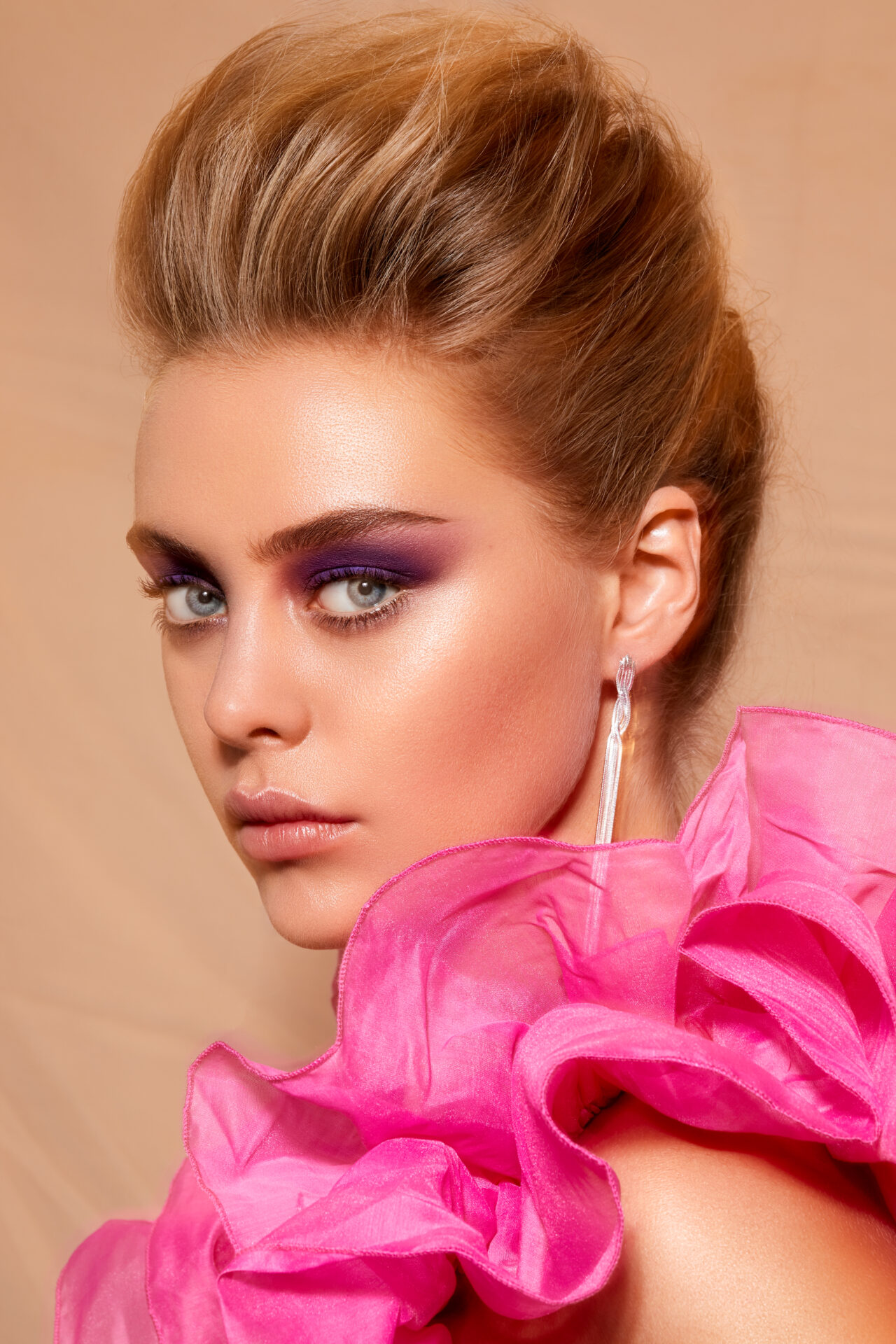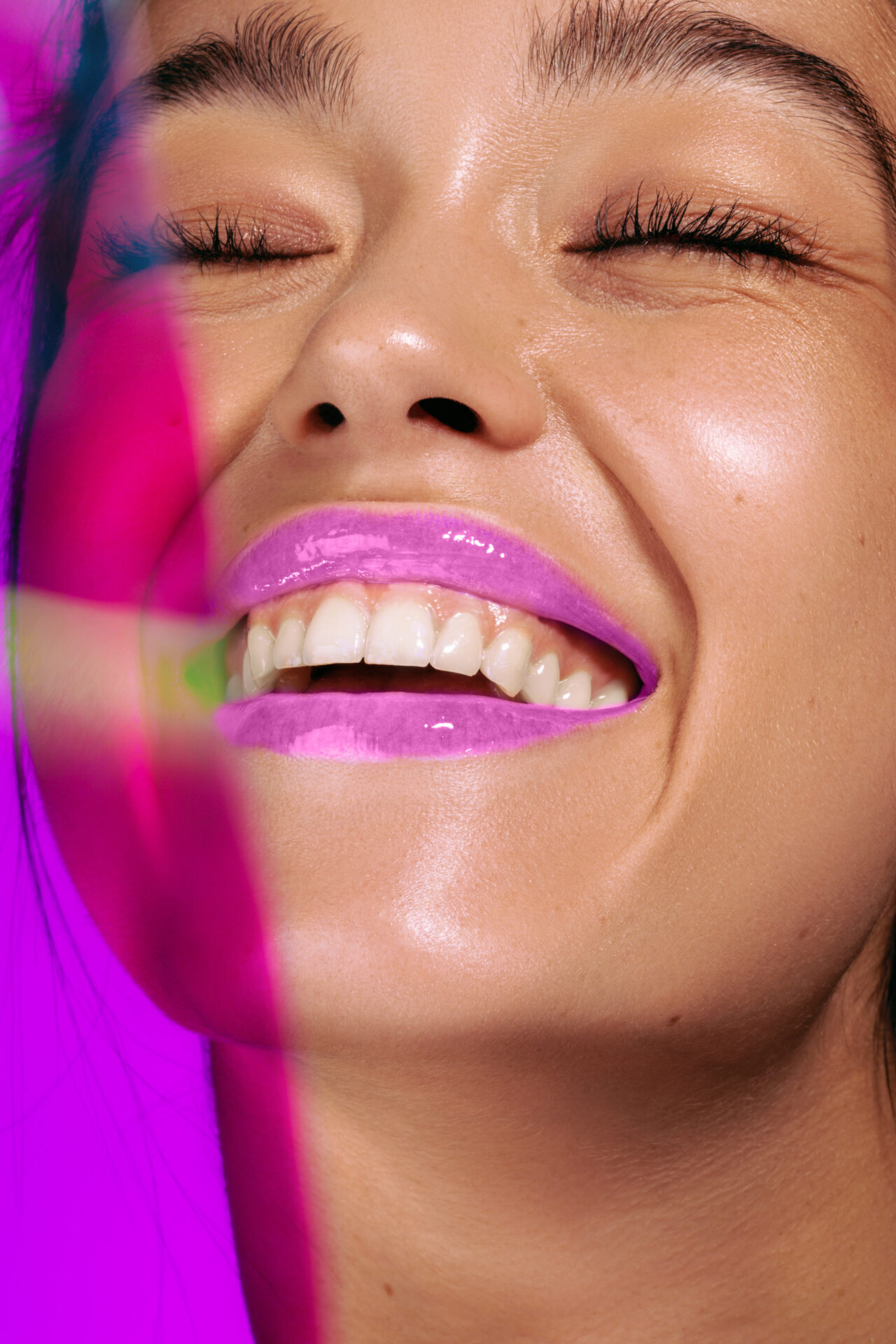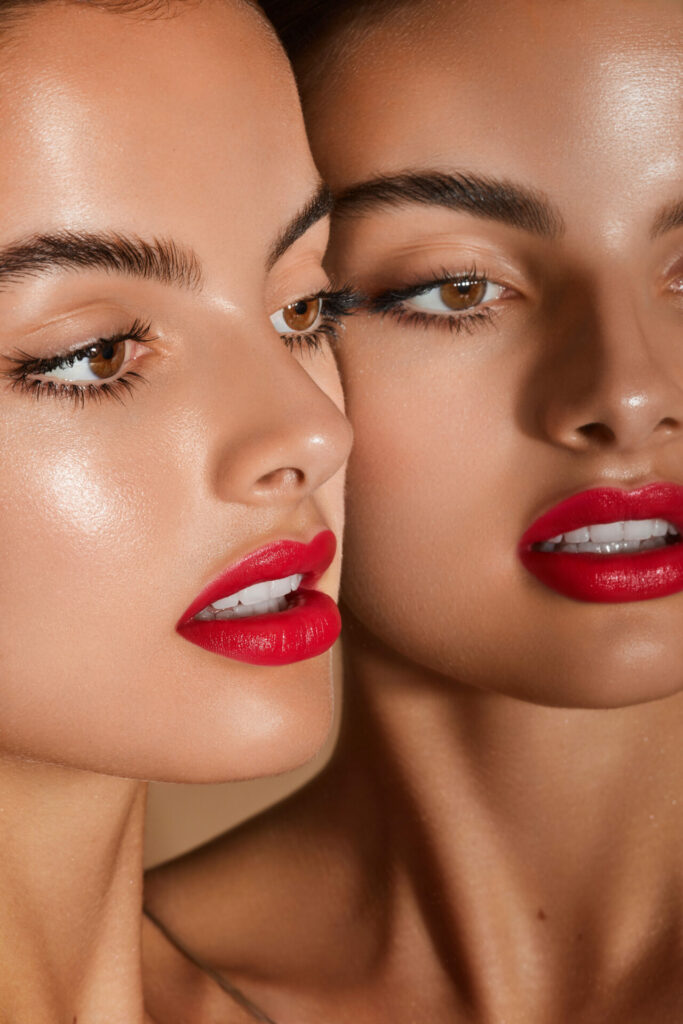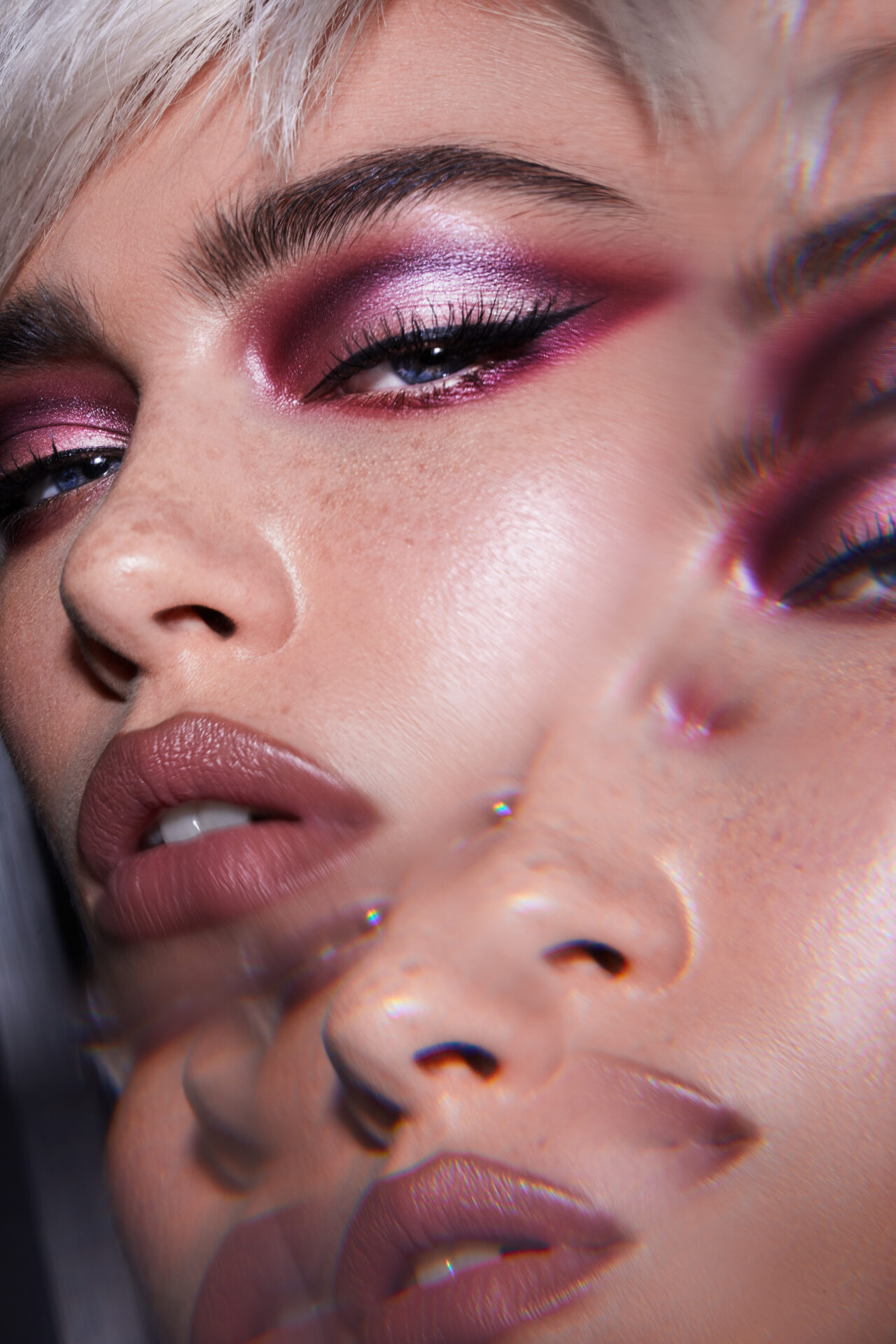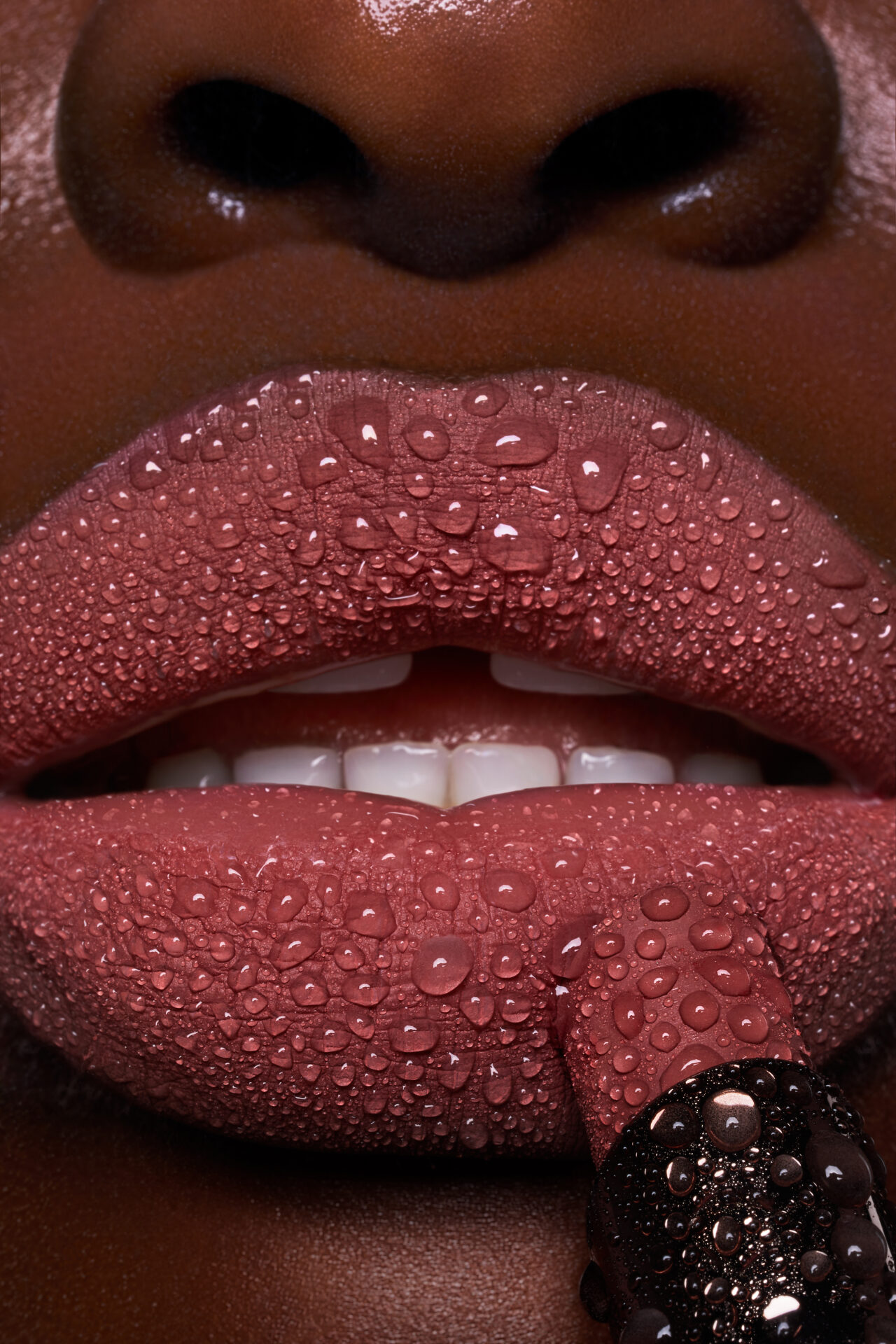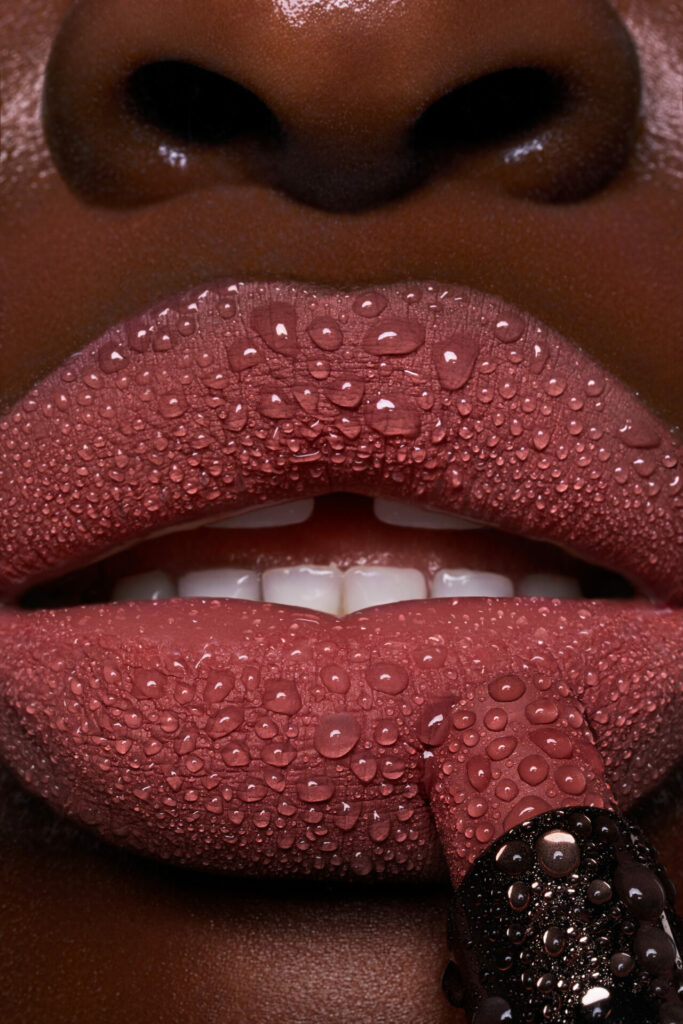
What I love about photography – and especially beauty photography – is the versatility with which you can exercise your creativity. When you’re just starting out in photography, you’re usually busy learning about the functions of your camera, the technical aspects of photography, and which setting changes affect the image result. The more familiar you are with techniques, the more confident and experienced you become in photography: and the less attention you need to pay to techniques. In return, you can then focus your attention on creativity. And I’m sure every photographer will agree with me on this. The pleasure of photography is inextricably linked to the creative possibilities that arise.
In this blog post, I would like to give you an insight into my six favorite creative effects, which make many pictures more exciting.
3.Color foils
Color filters (or simply color foils) from lighting technology are a fascinating effect that can also be used in photography. Color foils use the physical principle of subtractive color mixing to filter out the colored parts of the light that you don’t want. A blue color filter, for example, filters out large amounts of red and yellow color components in the light, leaving only the blue color components and thus “coloring” the subject blue. For this very reason, however, it is important to work very carefully and precisely. Since only the desired color “remains”, only these color components are recorded by the camera. This means that the color components that have been filtered out cannot be retrieved or enhanced in post-processing in Photoshop since they are not present in the photo at all. The color of the image should therefore be very close to the desired color result. You can use color filters to colorize motifs either completely or partially. Color foils can be held close in front of the lens to colorize the image, or held in front of the flash heads to colorize the flash lights. If you want to get a clear color edge like in the example image, hold the color film only partially in front of the lens. You can vary the distance between the foil and the lens, and the sharpness of the color edge will change accordingly.
4.Mirror
One or more mirrors can achieve multiplying effects on the subject. The challenge is that even minimal changes in the angle of the mirror position can greatly affect the result. Another challenge is when the subject in the reflection is no longer in the same depth of field as the subject because then the reflection and the subject cannot be in focus at the same time. Here, you need patience and have to experiment to get the desired result.
5.Cutouts from paper
Large sheets of cardboard can be a great element to make photos more interesting and deliberately direct the viewer’s eye. In the example image, we chose a circle as the cutout shape and placed the model in the cutout. But it doesn’t always have to be neat either! You can also tear out cutouts, burn them out, punch them out, etc. Cut out shapes can also be creatively held in the image to create an interesting effect. There are no limits to your imagination here.
6.Blurred photos
Technical incorrectness can also have its appeal, as long as it is intentional and used as a stylistic device. Photos don’t always have to be absolutely sharp and flawless; a blurred subject can also be interesting. I like to use this effect with glitter, glamor, and disco looks to pick up the dynamics of party situations and make the image more exciting for the viewer.
1. Glass prisms
Everyone remembers prisms from physics classes in school. Prisms are chunks of glass that have been cut at different angles to refract light in a variety of ways. If you place the prism directly in front of the lens, the subject multiplies in an interesting way. Prisms come in a wide variety of sizes and shapes, producing a huge variety of effects in the image. The result can’t be exactly planned, but that’s what makes the effect exciting!
2.Water drops
A simple water spray bottle can be used to create very interesting effects that are particularly effective in beauty macro shots. The small water drops reflect light and sometimes color from the surroundings, which adds texture to smooth surfaces. The use of water drops is particularly effective when two different textures meet. In the example image, that’s the matte lipstick and the water drops. They make a simple lip closeup much more exciting.
3.Color foils
Color filters (or simply color foils) from lighting technology are a fascinating effect that can also be used in photography. Color foils use the physical principle of subtractive color mixing to filter out the colored parts of the light that you don’t want. A blue color filter, for example, filters out large amounts of red and yellow color components in the light, leaving only the blue color components and thus “coloring” the subject blue. For this very reason, however, it is important to work very carefully and precisely. Since only the desired color “remains”, only these color components are recorded by the camera. This means that the color components that have been filtered out cannot be retrieved or enhanced in post-processing in Photoshop since they are not present in the photo at all. The color of the image should therefore be very close to the desired color result. You can use color filters to colorize motifs either completely or partially. Color foils can be held close in front of the lens to colorize the image, or held in front of the flash heads to colorize the flash lights. If you want to get a clear color edge like in the example image, hold the color film only partially in front of the lens. You can vary the distance between the foil and the lens, and the sharpness of the color edge will change accordingly.
4.Mirror
One or more mirrors can achieve multiplying effects on the subject. The challenge is that even minimal changes in the angle of the mirror position can greatly affect the result. Another challenge is when the subject in the reflection is no longer in the same depth of field as the subject because then the reflection and the subject cannot be in focus at the same time. Here, you need patience and have to experiment to get the desired result.
5.Cutouts from paper
Large sheets of cardboard can be a great element to make photos more interesting and deliberately direct the viewer’s eye. In the example image, we chose a circle as the cutout shape and placed the model in the cutout. But it doesn’t always have to be neat either! You can also tear out cutouts, burn them out, punch them out, etc. Cut out shapes can also be creatively held in the image to create an interesting effect. There are no limits to your imagination here.
6.Blurred photos
Technical incorrectness can also have its appeal, as long as it is intentional and used as a stylistic device. Photos don’t always have to be absolutely sharp and flawless; a blurred subject can also be interesting. I like to use this effect with glitter, glamor, and disco looks to pick up the dynamics of party situations and make the image more exciting for the viewer.
1. Glass prisms
Everyone remembers prisms from physics classes in school. Prisms are chunks of glass that have been cut at different angles to refract light in a variety of ways. If you place the prism directly in front of the lens, the subject multiplies in an interesting way. Prisms come in a wide variety of sizes and shapes, producing a huge variety of effects in the image. The result can’t be exactly planned, but that’s what makes the effect exciting!
2.Water drops
A simple water spray bottle can be used to create very interesting effects that are particularly effective in beauty macro shots. The small water drops reflect light and sometimes color from the surroundings, which adds texture to smooth surfaces. The use of water drops is particularly effective when two different textures meet. In the example image, that’s the matte lipstick and the water drops. They make a simple lip closeup much more exciting.
3.Color foils
Color filters (or simply color foils) from lighting technology are a fascinating effect that can also be used in photography. Color foils use the physical principle of subtractive color mixing to filter out the colored parts of the light that you don’t want. A blue color filter, for example, filters out large amounts of red and yellow color components in the light, leaving only the blue color components and thus “coloring” the subject blue. For this very reason, however, it is important to work very carefully and precisely. Since only the desired color “remains”, only these color components are recorded by the camera. This means that the color components that have been filtered out cannot be retrieved or enhanced in post-processing in Photoshop since they are not present in the photo at all. The color of the image should therefore be very close to the desired color result. You can use color filters to colorize motifs either completely or partially. Color foils can be held close in front of the lens to colorize the image, or held in front of the flash heads to colorize the flash lights. If you want to get a clear color edge like in the example image, hold the color film only partially in front of the lens. You can vary the distance between the foil and the lens, and the sharpness of the color edge will change accordingly.
4.Mirror
One or more mirrors can achieve multiplying effects on the subject. The challenge is that even minimal changes in the angle of the mirror position can greatly affect the result. Another challenge is when the subject in the reflection is no longer in the same depth of field as the subject because then the reflection and the subject cannot be in focus at the same time. Here, you need patience and have to experiment to get the desired result.
5.Cutouts from paper
Large sheets of cardboard can be a great element to make photos more interesting and deliberately direct the viewer’s eye. In the example image, we chose a circle as the cutout shape and placed the model in the cutout. But it doesn’t always have to be neat either! You can also tear out cutouts, burn them out, punch them out, etc. Cut out shapes can also be creatively held in the image to create an interesting effect. There are no limits to your imagination here.
6.Blurred photos
Technical incorrectness can also have its appeal, as long as it is intentional and used as a stylistic device. Photos don’t always have to be absolutely sharp and flawless; a blurred subject can also be interesting. I like to use this effect with glitter, glamor, and disco looks to pick up the dynamics of party situations and make the image more exciting for the viewer.


